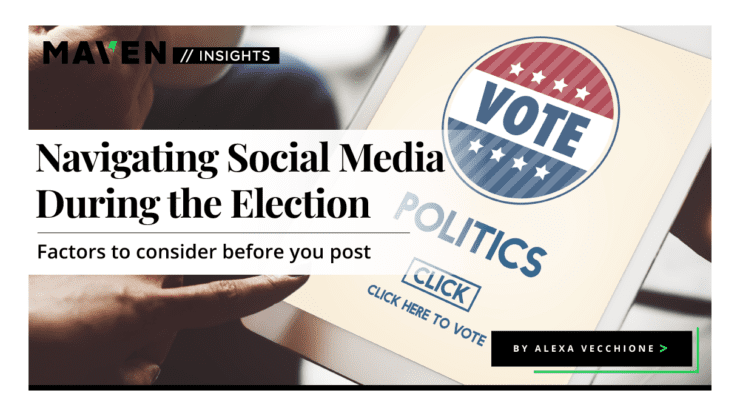If 2020 has taught social media managers anything, it’s that you can’t plan for everything. From COVID-19 to nationwide civil unrest to an ongoing conversation around censorship on social media, it’s rare to find a content calendar that has remained unscathed. And to top it all off, we’re about to enter into a presidential election like no other.
While social media offers brands a great platform to encourage people to vote and point them in the right direction for resources, it is important to decide how your brand should engage in the election conversation– if at all. It all comes down to determining your key messages and target audiences.
To prepare for November 3rd and beyond, consider these critical factors:
Timing is Key
The buzzword “tone-deaf” has been thrown around a lot this year, as some brands have been caught saying the wrong thing at the wrong time. Election Day will be no different. People across the country will be tuned in to their social media all day, checking the latest updates and results. This heightened activity would typically present an opportunity for brands. However, given the current environment it’s probably not the best day, or week, to share important news or content on your social media platforms. The last thing you want is to appear out of touch and have a big announcement go unnoticed. So, do your due diligence before you post. Ensure the topic you post about won’t be torn apart by well-respected media outlets and social media channels.
Find Your Place
What role does your brand play in the election conversation? Are there issues on the ballot that are key to the success of your organization? Are you neutral? These are questions that will seriously impact how you interact with election content, especially on the day itself.
If you find it necessary to share content relevant to the election, try to do so without being political. Share a topic or story that directly relates to your brand or the work of your organization, rather than making a connection to a candidate or party. Stay away from political memes, election results, or anything that may confuse, upset, or offend your audience.
A safe way to engage in the election conversation is through voter encouragement. Sharing nonpartisan voter resources or images of employees with “I Voted” stickers or mail-in ballots is a great way to meaningfully engage in the conversation.
Avoid Misinformation
There will be a nonstop stream of chatter on all social media platforms around the election, which means there is bound to be a hearty amount of misinformation. The last thing your brand wants to do is share content that is inaccurate. Doing your research on what social platforms are doing to help mitigate the spread of misinformation is a good start.
While it’s wise to prioritize social listening throughout the day to know what’s trending, be aware of reposting any news or information until you have thoroughly fact-checked. It’ll be wise to reassess any paid advertising campaigns you’re running on or around election day. Ensure information you are putting out there is authentic and accurate, while not pushing out any political agenda.
This election season has been a truly unique experience for all, especially communicators and social media managers. It can be tough staying true to your brand and executing a dynamic content strategy with the hurdles that come with the election, but stay optimistic. Prepare for anything and stay strategic with every message you send out on and around November 3rd. That way, you can ensure you are still reaching your audiences effectively and authentically.
Thank you for reading our Insight about how to navigate social media during the election. Check out Jessica’s Insight on the do’s and don’ts on how to communicate around the upcoming election.
Posted In Digital Strategy & Social Media
